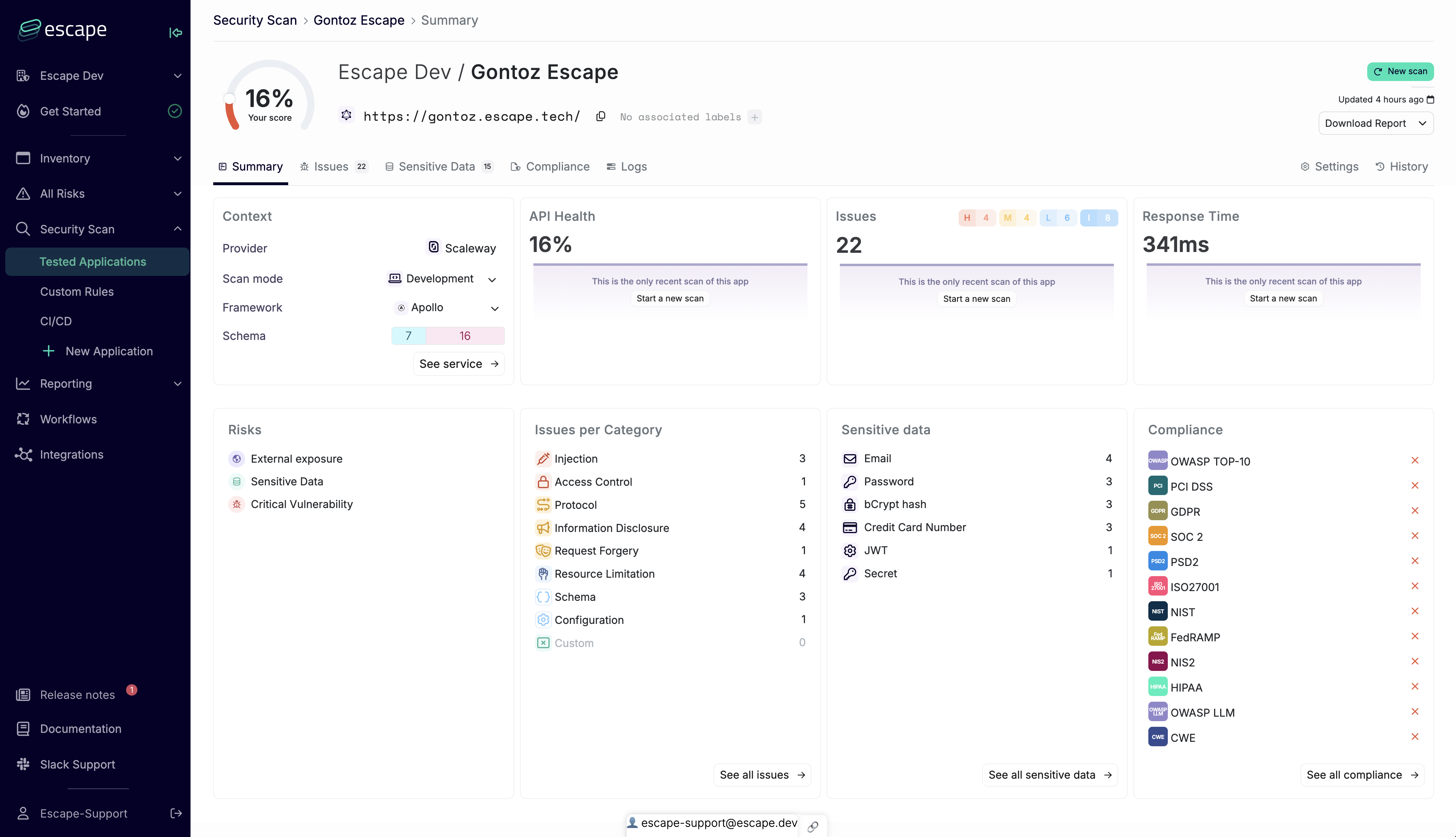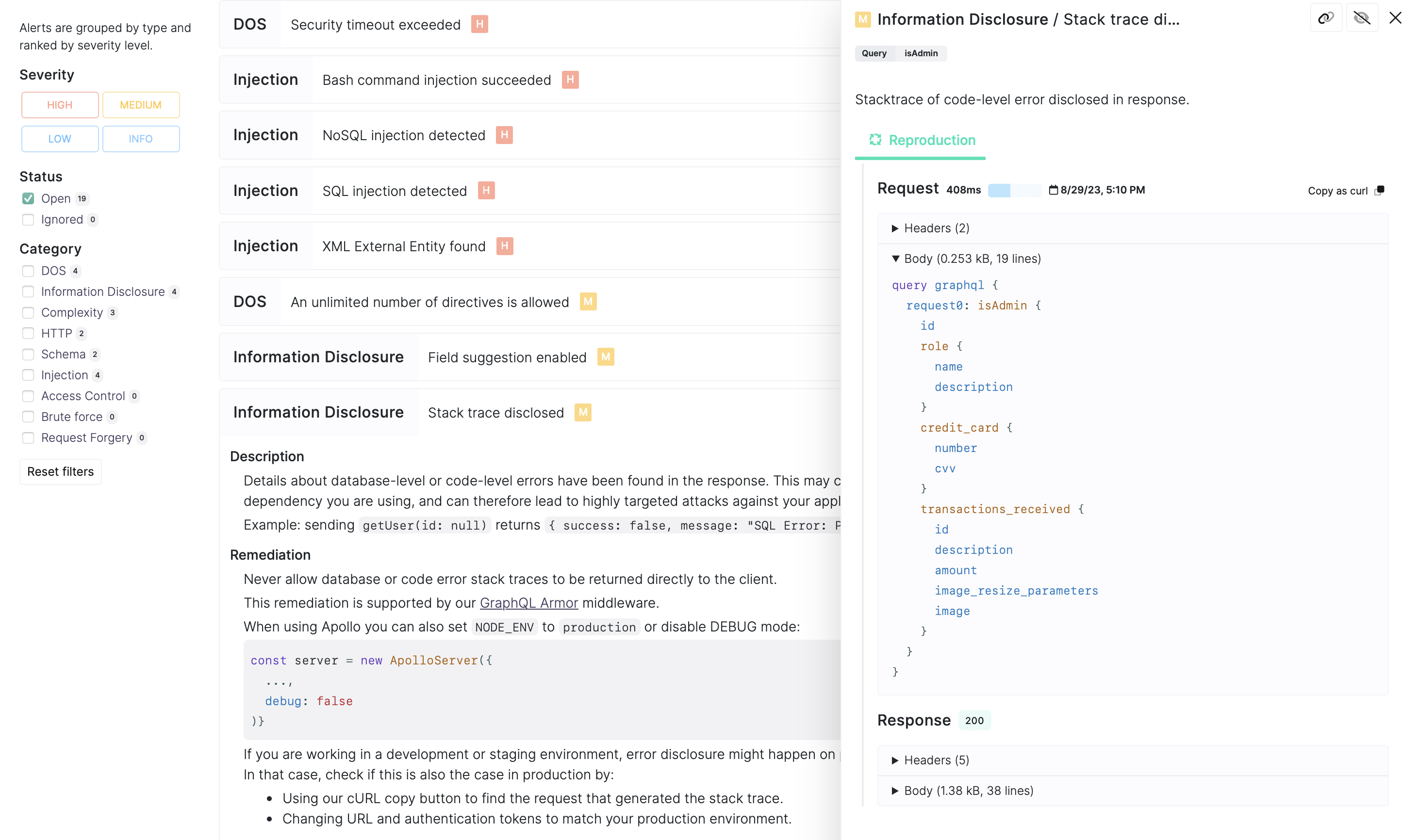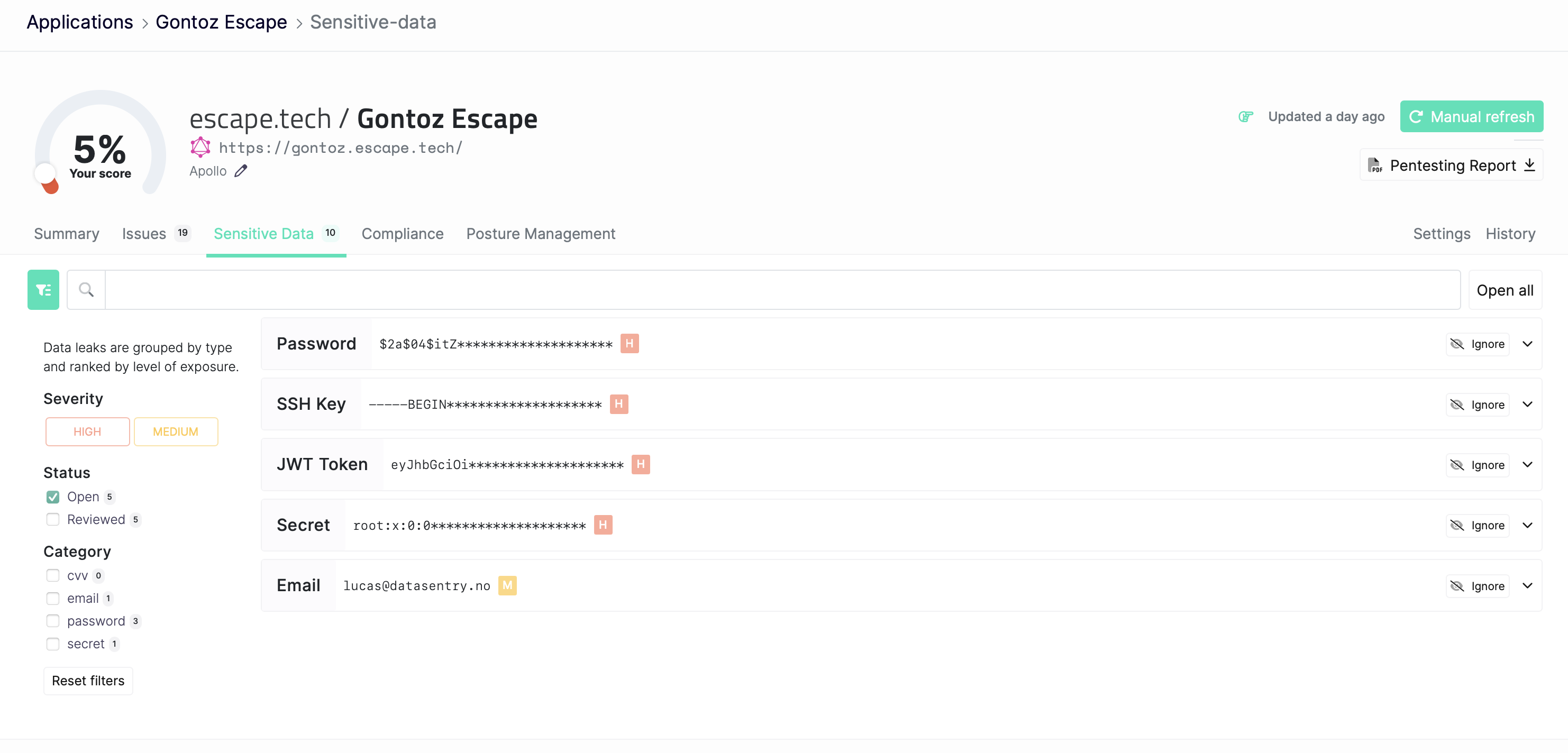Understanding Results
After scan completion, you'll be redirected to the results page. Here you can view both individual scan results and historical DAST scan data over time.

Issues, Reproduction & Remediations¶
Escape's Contextual Remediation feature helps you understand vulnerabilities in the context of your organization's security posture. Vulnerabilities are:
- Detected and analyzed
- Prioritized based on specific risks
- Contextualized to focus remediation efforts
Detailed remediation guidance is provided for all GraphQL, REST, and SPA frameworks.

For APIs:
- Includes
cURLcommands for issue reproduction - Provides step-by-step reproduction guidance
For SPAs:
- Includes Trace Viewer link showing exact reproduction steps
- Based on Playwright trace format
- Contains screenshots and crawled elements for in-depth debugging
Sensitive Data Detection¶

Escape triggers alerts when detecting sensitive data and provides:
- Detailed examination in the "Sensitive Data" tab
- Rich contextual information about data accessibility
- Risk assessment for each data type
Types of Sensitive Data:
- Personally Identifiable Information (PII): Including but not limited to Social Security numbers, full names, and email addresses.
- Financial Information: Such as credit card numbers, bank account details, and transaction histories.
- Tokens and Secrets: Like API keys, JWT tokens, and encryption keys.
A complete list of supported data types can be found in the Data Types Reference page.
Governance & Operations¶
Escape's Governance & Operations section provides a comprehensive overview of how to manage and operationalize your security posture: Vulnerability Management, Reporting, Compliance, Automations & Notifications, Ticketing & Workflows, and more.